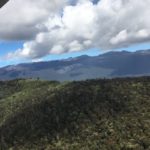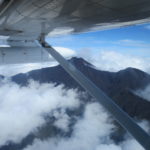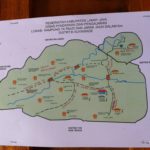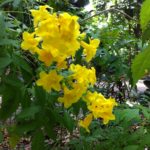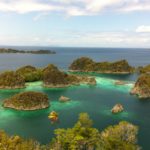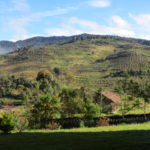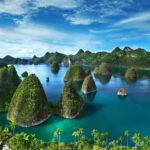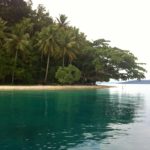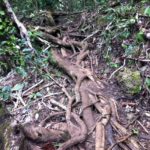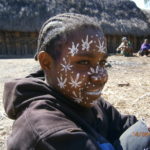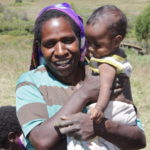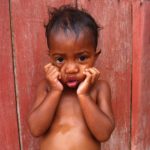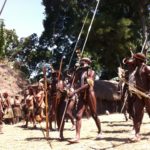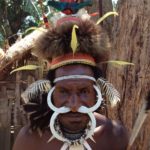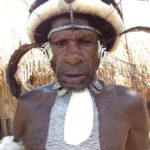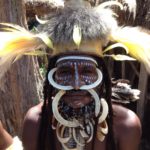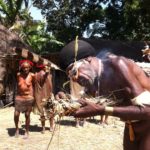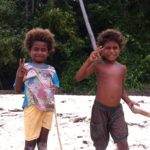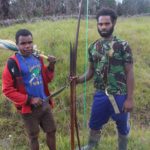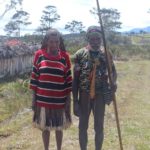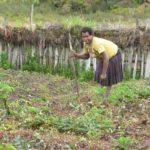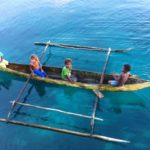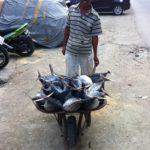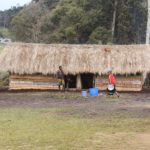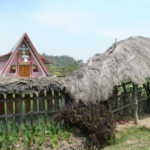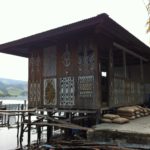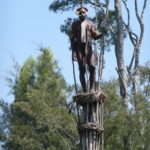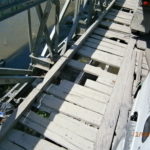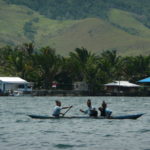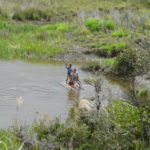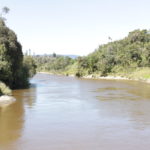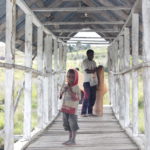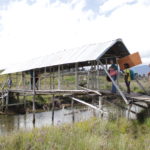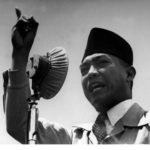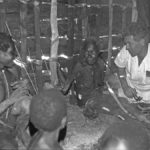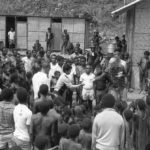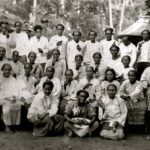General information about Papua.
This information is about the province of Papua and belongs to Indonesia. Indonesia consists of the largest archipelago in the world. It consists of 5 large islands surrounded by small islands (Indonesia on the map). Perhaps more than 3.486 million people live there (2014). Indonesia is a republic and has 28 provinces. Papua is a province of Indonesia. It has an area of 319,036 km2. The inhabitants consist of different peoples. They all have their own culture, history, tradition and sometimes their own language. Many tourists visit Indonesia for its mystical culture and beautiful nature. One of the largest islands is split in two. The left part falls under Indonesia and is called Papua. The right part has its own board and is called Papua New Guinea.
Location
The island is about 13 times the size of the Netherlands. In the north, Papua borders on the Indian Ocean, in the south on the Arafura Sea. An impressive mountain range runs along the entire length of Papua, with mountains sometimes higher than 5000 meters. The island has a tropical climate, especially on the coast and a continental climate in the interior. The capital of Papua is Jayapura.
https://nl.wikipedia.org/wiki/West-Papoea
Climate
Papua has a tropical climate. Along the coast the temperature is usually around 30 degrees Celsius and inland the average temperature is around 20 degrees Celsius. The high plateaus in the interior have a continental climate (it can freeze at night between the mountain ranges). The Papuans do not have spring, summer, winter and autumn. They speak of a dry season (from December to March) and a wet season (from May to October). There is a lot of rain every year. Sometimes four times as much as in our country. When it rains, it rains very hard and for a long time.
Fauna and Flora
Papua consists of impenetrable jungle, wetlands and two huge mountain ranges. On the map you can see that there are many small islands around Papua. The biodiversity in Papua is one of the largest in the world. More than 2,700 species of orchids, lianas, medicinal plants and tree ferns grow on the island. There are at least 650 bird species.
In the high mountains of the Penungan Arfak nature reserve (25 km from Manokwari) 320 bird species have been counted, including several species of birds of paradise, parrots and cockatoos. In addition, about 110 mammal species live in the Arfak Mountains, including 30 marsupial species and tree kangaroos, many cuscus species, flying foxes, bats and opossums. Numerous insects and reptiles also live here, including large butterflies and the smaller relative of the Komodo dragon. The marine reserves ‘Marine Park Raja Ampat’ and ‘Cenderawasih Marine Park’ with beautiful corals and paradise islands are unique in the world. These areas have a wealth of dolphins, turtles, mantra rays, whales, pygmy seahorses, etc. In 2007 many new species were discovered here. The wildlife of Papua is threatened by oil exploitation and the jungle is being cleared to make way for palm oil plantations.
Population
The population consists of different peoples. Not all Papuan peoples speak the same language. There are approximately 263 Papuan languages in Papua alone. The Papuans do not belong to the Asian peoples but to the Melanesians. Melanesia is a vast archipelago northeast of Australia. The appearance of the Papuans also shows that they are related to the Melanesians and not to the Asian Indonesians. They are more like the Aborigines from Australia. The population lives mainly along the coast and in the inland plateaus.
The population mainly lives from agriculture and fishing. Each nation has its own culture and rituals. Originally they are a natural people, i.e. they live in and of nature. They make their jewelry, weapons, boats, clothes and houses from what grows and lives in their environment. Such as reed, natural stone, bird feathers, shells, seeds, berries, sand, clay and sometimes also bones of dead animals and people. Along the coast people live on fish and in the plateaus on agricultural products such as sweet potatoes, carrots and peas.
Religion
Indonesia has a wide variety of beliefs that are colored by local traditions and passed on from generation to generation. These local beliefs determine the structure of each tribe or people and are known in Indonesia as adat, the customs of a group or community. It is striking that the population group combines different faiths (Catholicism, Reformed Church, etc.) with the adat. A person who adheres to the laws of Islam may also engage in other rituals, such as burning incense and making small offerings to local spirits. In the inaccessible interior of Papua, many people are animists. They believe that all things have a soul and that every animal, man and object has a spirit. Tattoos and blessed amulets are supposed to bring good luck or protect against evil influences. Different peoples not only believe in animism, but also practice ancestor worship, a custom of worshiping the souls of deceased relatives. Many missionaries have lived and worked in Papua. They were sent out to spread the Christian faith. They built roads, churches, houses and schools where they taught the Papuans about the western way of life.
Transmigration
Moving from one island to another is called transmigration. Indonesia has islands that are overpopulated such as Java. The government of Indonesia has tried to move people from other islands to West Papua, promising that they could build a good life there. The Papuans are now even a minority on their own island. There are now more transmigrants than Papuans. The people who transmigrate are mainly farmers. The government supports them by offering them a new place to live, a piece of land and a house. Transmigration has caused many problems in Papua. The Papuans did not think it fair that the transmigrants were supported by the government, in addition, the Papuans had to give up their own land.
https://mens-en-samenleving.infonu.nl/internationaal/114284-transmigratie-in-indonesie.html
Transportation
Papua only has a road network along the coast. There are hardly passable roads to the interior. Sometimes the interior can only be reached by boat via rivers or by plane. The villages in the most remote inlands often have no facilities such as electricity or a water network. The villages in the interior can often only be reached via footpaths. Road construction is complicated by the impenetrable jungle and mountain ranges of the central highlands. But there will be a road construction through the interieur in 2023.
History
Indonesia used to be a colony of the Netherlands. The history tells the connection of Indonesia to the Netherlands from 1660 to the year 1962.
Pre-colonial period
The history of Papua is very young. From the beginning of the sixteenth century, Papua had already been discovered by the Europeans. They were looking for spices, but few actually bothered to explore the island.
After 1800, the island gets more attention from the Europeans. A Portuguese spice trader, Don Jorge de Meness, is said to have discovered the island just after 1800. He is also said to have given it the name Papua.
Papua is the Malay word for a person with frizzy hair. Another trader from Spain, Alvaro de Saavedra, who visited the island after Meness, called the island Isla del Oro, the Golden Island. Papua and West Papua have had different names over time.
The island’s natural resources would eventually cause the Dutch to migrate to the area. The Dutch had already recognized the sovereignty of the Sultan of Tidore over New Guinea in 1660. And since Tidor was under Dutch rule, New Guinea was theoretically in Dutch hands. The British were also interested in the island and had unsuccessfully tried to establish a settlement near Manokwari in 1793.
Colonial Period
The Dutch claimed sovereignty over western New Guinea in 1824. After signing a treaty with the English, the western part of New Guinea was officially seized in 1848. However, it would take until 1896 before the Dutch had a permanent base on the island.
From then on, the Dutch began serious expeditions inland. However, the expedition of the interior of Papua and West Papua was not an important item for the Dutch. It would take until 1938 before the great Baliem valley with its 50,000 inhabitants was discovered.
In the first half of the twentieth century, several initiatives were set up by Indonesian youth to achieve independence. The Dutch countered these initiatives by exiling the leaders to Merauke on Papua. Sukarno, Muhammad Hatta and Sutan Syahrir have all spent time on Merauke.
During the Second World War, Papua and West Papua came into Japanese hands. After the war, the island returned to Dutch hands in 1945. In 1962, the Netherlands would only release West Papua under pressure from the Indonesian army and under strong diplomatic pressure from the United Nations. From that time on, West Papua belongs to Indonesia.
https://anderetijden.nl/aflevering/589/100-jaar-Soekarno?
Postcolonial period
Papua was annexed to the Indonesian Republic in 1963. However, the Netherlands had handed over the island to Indonesia in 1963 on the condition that the people of Papua could decide for themselves about their future.
The Indonesian government later chose not to use a referendum. The government determined that the future of the island had to be decided through a vote (= musyawarah). The musyawarah meant that an agreement had to be reached by the representatives of the island about what was to be done with the island. These representatives were selected by the Indonesian government itself. Under pressure from Indonesia, the representatives opted for Papua to remain part of Indonesia.
However, this decision has never been recognized by many organizations including OPM (Operasi Papua Merdeka = Operation Free Papua). They have not acknowledged this because the vote took place under pressure from Indonesia. After the vote, there have been all kinds of disturbances and uprisings against the central Indonesian government.
https://www.indonesie.nl/indonesie/reisgids/papoea/achtergronden-papoea/geschiedenis-papoea/
Summary
Until 1962, western New Guinea (West Irian, Irian Jaya) was considered an overseas territory of the Netherlands. During World War II, this island was also occupied by the Japanese. After the Second World War, Indonesia strives for independence and separates from the Netherlands.
In 1949 an agreement was signed between the Netherlands and Indonesia. The Netherlands transferred sovereignty (of Papua and West Papua) to the Indonesian government. Papua still belonged to the Netherlands until 1962, after which they were also handed over to Indonesia. Current history tells that the Papuans preferred to rule their own country. To this day they fight for self-government.
Source: teaching materials VO, Fliers & Veldmate

